Hoosier History Live is an independently produced new media project about Indiana history, integrating podcasts, website www.HoosierHistoryLive.org, weekly enewsletter, and social media. Its original content comes initially from a live with call in weekly talk radio show hosted by author and historian Nelson Price. You can hear the show live Saturdays from noon to 1 pm ET at WICR 88.7 fm or stream the show live at the WICR HD1 app on your phone, or at our website.
July 27, 2024
Invasive pests impacting plants and trees
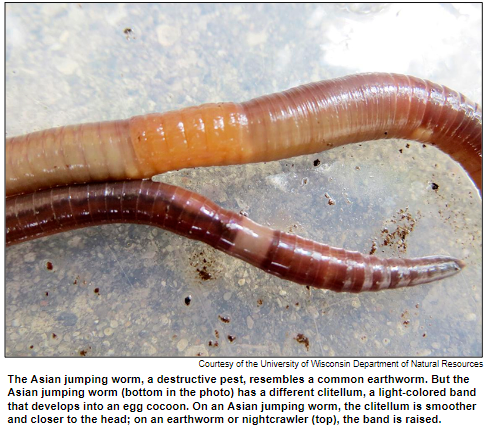
With its vivid coloring, the spotted lantern fly is so attractive that its looks could kill – which is the problem.
 "It's a terrible threat to all kinds of trees and plants, including grapes'' says Jo Ellen Meyers Sharp, the Hoosier Gardener. The spotted lantern fly isn't the only pest in Indiana – and other invasive pests are inching their way toward the state's borders.
"It's a terrible threat to all kinds of trees and plants, including grapes'' says Jo Ellen Meyers Sharp, the Hoosier Gardener. The spotted lantern fly isn't the only pest in Indiana – and other invasive pests are inching their way toward the state's borders.
Jo Ellen, a well-known garden writer, speaker and garden coach, will join Nelson in-studio to tackle a range of invasive pests and share insights about how to handle them. Asian jumping worms will be on the, uh, menu for discussion. So will viburnum beetles, which threaten viburnums, a popular native shrub found in Indiana landscapes and forests.
The emerald ash borer, which has been a threat for several years to ash trees, is another invasive pest that we will explore. And the spongy moth, once known as the gypsy moth, is yet another invasive pest that Jo Ellen will discuss.
While we have Jo Ellen, the past president of GardenComm: Garden Communicators International, in the studio, Nelson plans to open the phone lines early so listeners can call in with any garden-related questions or comments. She has a four-season commercial and residential container planting business; for 20 years, Jo Ellen worked at a large, independent garden center in Indianapolis.
 According to a blog that Jo Ellen wrote about the spotted lantern fly, the insect originated in China. Despite their name, they are not flies; instead, they hop. They feed on 70 plant species, which "zaps the plants, weakening and stressing them, making them susceptible to disease and other insect problems, and possibly death."
According to a blog that Jo Ellen wrote about the spotted lantern fly, the insect originated in China. Despite their name, they are not flies; instead, they hop. They feed on 70 plant species, which "zaps the plants, weakening and stressing them, making them susceptible to disease and other insect problems, and possibly death."
Asian jumping worms also are destructive. According to the University of Wisconsin Department of Natural Resources, they resemble a common earthworm or nightcrawler. The non-native jumping worms can be distinguished from an earthworm by their clitellum, a light-colored band that develops into an egg cocoon. On an earthworm or nightcrawler, the band is raised and further from the head; on an Asian jumping worm, the band is smoother and closer to the head.
The viburnum beetle is posing a potential threat to Indiana because it's been clearly established in Ohio, Illinois, Michigan and other nearby states. It threatens viburnum plants that are food for birds and other wildlife.
Although this focus on invasive pests will be a fresh topic for us with Jo Ellen, she has been our guest several times, including on a show in 2021 that explored Bradford pear trees and other invasive trees and plants. A 25-year veteran of print journalism, she is the owner of Write for You! LLC, a freelance writing and editing business. She publishes a free, monthly Hoosier Gardener Newsletter; you can subscribe here.
Latest Podcast Available!
Latest Podcast Available!

For a complete list of show podcasts and show enewsletters, please go to ARCHIVES on our website.
A Word from Molly and Nelson
Hoosier History Live to significantly reduce its media offering
"Yes, folks and fans, we know you love Hoosier History Live. But our resources have been dwindling for a long time. We just can't keep running on nothing!
In August, you will still be able to hear Nelson doing a live with call-in talk show Saturdays at noon on WICR 88.7 fm, or stream it on the WICR HD1 app. And we will continue to keep our website up so that our years worth of podcasts will be available for listening.
Sincerely, Molly and Nelson



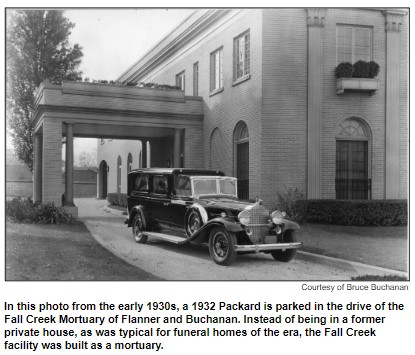
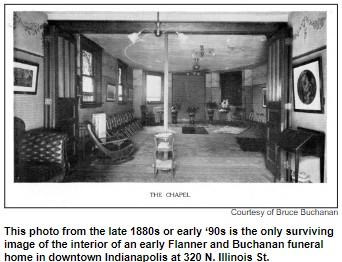 Ever since the 1820s, when David Buchanan arrived by covered wagon in the Indianapolis area and opened a tavern before becoming a farmer, the Flanner and Buchanan families have been intertwined with city history.
Ever since the 1820s, when David Buchanan arrived by covered wagon in the Indianapolis area and opened a tavern before becoming a farmer, the Flanner and Buchanan families have been intertwined with city history. 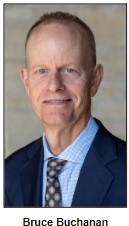 All of that and more will be explored during our show when
All of that and more will be explored during our show when 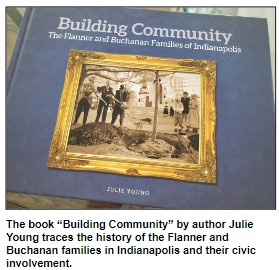 By then, Flanner and Buchanan had opened Fall Creek Mortuary, a structure that was built as a funeral center during an era when that was unusual; most were located in converted houses. Fall Creek Mortuary, which had a built-in organ and served as the flagship of the Flanner and Buchanan operation for decades, eventually was demolished in the 1990s.According to Building Community, the word "undertaker" was coined in the 19th century to describe someone, typically a carpenter, who was willing to "undertake the unpleasant duty" of handling the final presentations of the deceased. By 1887, when Frank Flanner persuaded his brother-in-law Charles Buchanan, Anna's husband, to join him in the business, the term undertaker was being dropped in favor of the more professional term of "funeral director". Like the Flanners, Charles Buchanan became immersed in civic affairs, including crusading for the creation of the
By then, Flanner and Buchanan had opened Fall Creek Mortuary, a structure that was built as a funeral center during an era when that was unusual; most were located in converted houses. Fall Creek Mortuary, which had a built-in organ and served as the flagship of the Flanner and Buchanan operation for decades, eventually was demolished in the 1990s.According to Building Community, the word "undertaker" was coined in the 19th century to describe someone, typically a carpenter, who was willing to "undertake the unpleasant duty" of handling the final presentations of the deceased. By 1887, when Frank Flanner persuaded his brother-in-law Charles Buchanan, Anna's husband, to join him in the business, the term undertaker was being dropped in favor of the more professional term of "funeral director". Like the Flanners, Charles Buchanan became immersed in civic affairs, including crusading for the creation of the 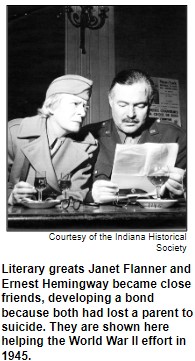 Janet Flanner, Frank Flanner's daughter, became one of the first movie critics in the country, writing about silent films for the Indianapolis Star. Beginning in the 1920s, though, she was a correspondent for The New Yorker magazine based in Paris. That's where she befriended other American expatriates including legendary novelists Ernest Hemingway and F. Scott Fitzgerald.
Janet Flanner, Frank Flanner's daughter, became one of the first movie critics in the country, writing about silent films for the Indianapolis Star. Beginning in the 1920s, though, she was a correspondent for The New Yorker magazine based in Paris. That's where she befriended other American expatriates including legendary novelists Ernest Hemingway and F. Scott Fitzgerald.
